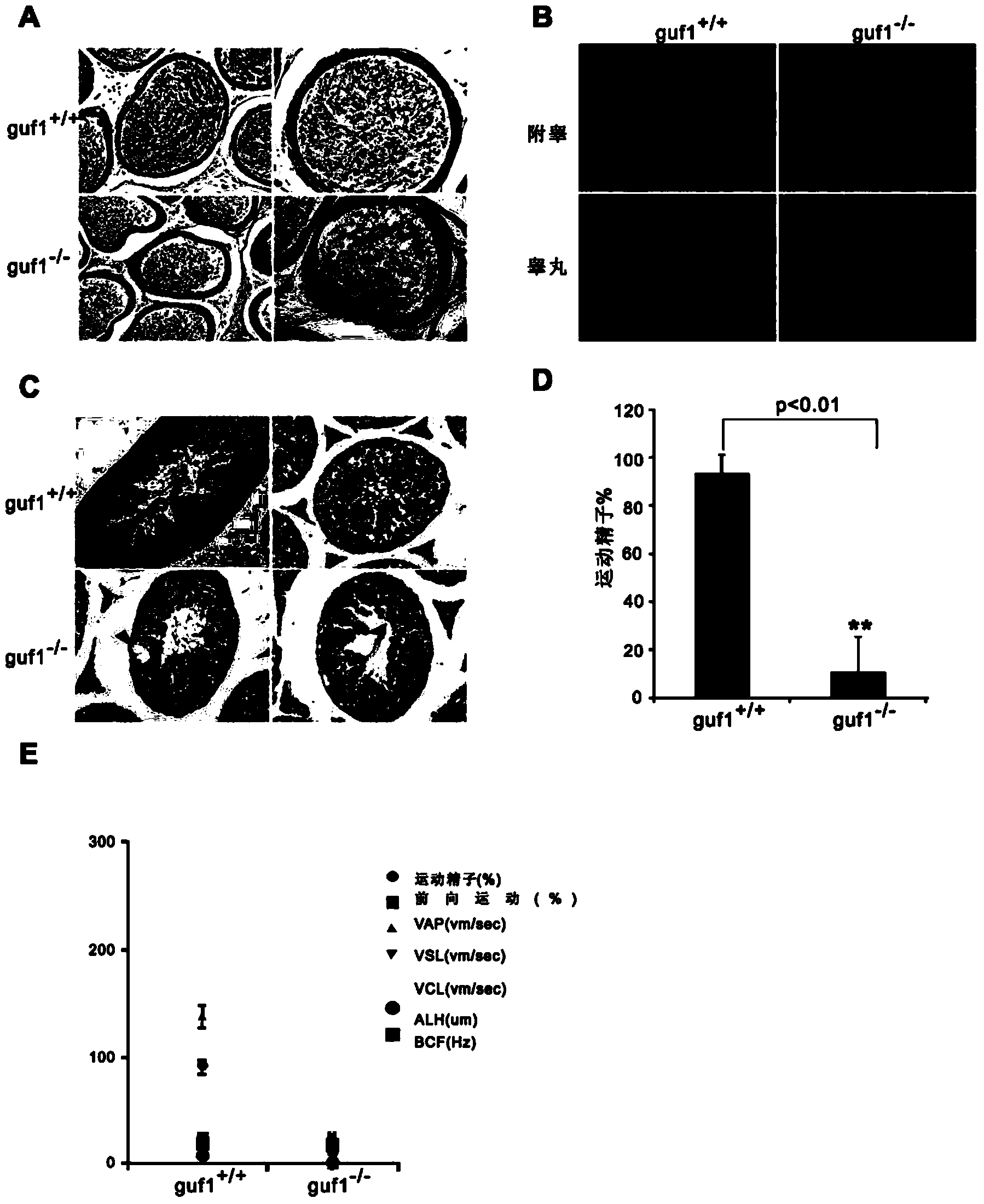Application of mitochondrion protein translation factor Guf1 in male sterile research
A male sterility and male technology, which is applied in the direction of introducing foreign genetic material using carriers, veterinary instruments, and microbial measurement/inspection, etc. It can solve problems such as membrane potential decline, affecting tissue and organ functions, and reducing ATP production.
- Summary
- Abstract
- Description
- Claims
- Application Information
AI Technical Summary
Problems solved by technology
Method used
Image
Examples
Embodiment 1
[0026] Example 1, Guf1 gene knockout strategy and PCR, Western blot detection.
[0027] In order to study the function of Guf1 protein in higher organisms and what impact its mutation will have on the body. We chose mice as a model organism, used gene targeting technology to knock out Guf1 protein, and used PCR and Western blot methods to evaluate the knockout efficiency. figure 1 The strategy for Guf1 protein knockdown and the knockout efficiency were tested by PCR and western blotting. figure 1 A shows the knockdown strategy of Guf1 figure 1 B represents the genotype of Guf1 knockout mice identified by PCR. figure 1 B represents the knockout efficiency of Guf1 in mouse tissues detected by western blot. The results showed that the amount of Guf1 protein was significantly reduced in the testis, further evidence that the protein was knocked out in mice.
[0028] specific method:
[0029] Obtaining Guf1 knockout mice:
[0030] Construction of the Guf1 targeting vector: the...
Embodiment 2
[0048] Example 2. Pathological analysis of male sterility caused by Guf1 gene knockout.
[0049] In order to further study the dysfunction caused by the loss of Guf1, we focused on the pathological study of the reproduction of Guf1 knockout mice, including the number of offspring, sperm motility, and pathological sections and transmission electron microscope analysis of testes. figure 2 A represents the analysis of the number of offspring, which shows that the male knockout mice and normal female mice have mating behavior but no offspring. figure 2 B Statistics of the sperm counts of wild-type and Guf1-knockout mice showed that the number of sperm in Guf1-knockout mice was significantly reduced. figure 2 C is the observation of testis morphology, and it was found that the testis morphology of Guf1 knockout mice became smaller. figure 2 D is the observation of sperm morphology by confocal fluorescence microscope, and it is found that the mitochondrial sheath of the knockou...
Embodiment 3
[0054] Example 3. Guf1 knockout increases sperm cell apoptosis and affects spermatogenesis.
[0055] In order to study the effect of Guf1 on the process of mouse spermatogenesis, we stained the reproductive organs of wild-type and Guf1-knockout male mice, including testes and epididymis, and analyzed sperm motility. image 3 A and C are the H&E staining of the knockout epididymis and testis, which shows that there are a large number of immature sperm cells in the knockout mouse epididymis. image 3 B is TUNEL detection of apoptosis in testis and epididymis, indicating that Guf1 knockout will produce obvious apoptosis. image 3 D and E are the analysis of sperm motility by computer assisted sperm analyzer (CASA), and the results show that the sperm motility of knockout mice is significantly reduced. Through the above pathological analysis of Guf1 knockout, it was found that Guf1 knockout would cause spermatogenesis disorder and lead to male sterility.
[0056] specific method...
PUM
 Login to View More
Login to View More Abstract
Description
Claims
Application Information
 Login to View More
Login to View More - R&D Engineer
- R&D Manager
- IP Professional
- Industry Leading Data Capabilities
- Powerful AI technology
- Patent DNA Extraction
Browse by: Latest US Patents, China's latest patents, Technical Efficacy Thesaurus, Application Domain, Technology Topic, Popular Technical Reports.
© 2024 PatSnap. All rights reserved.Legal|Privacy policy|Modern Slavery Act Transparency Statement|Sitemap|About US| Contact US: help@patsnap.com










